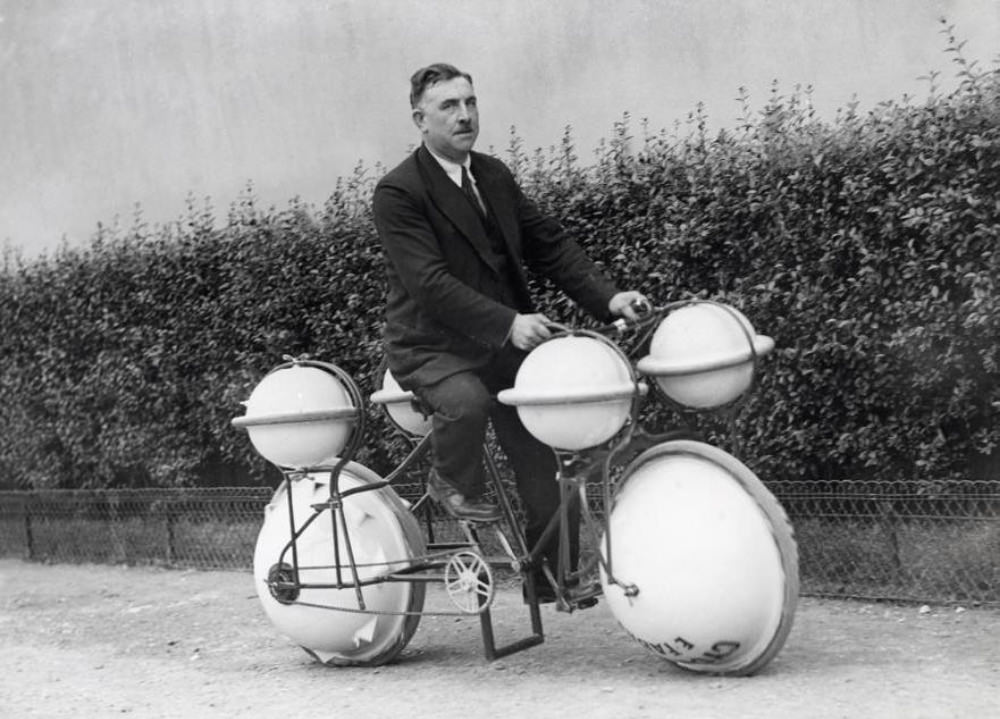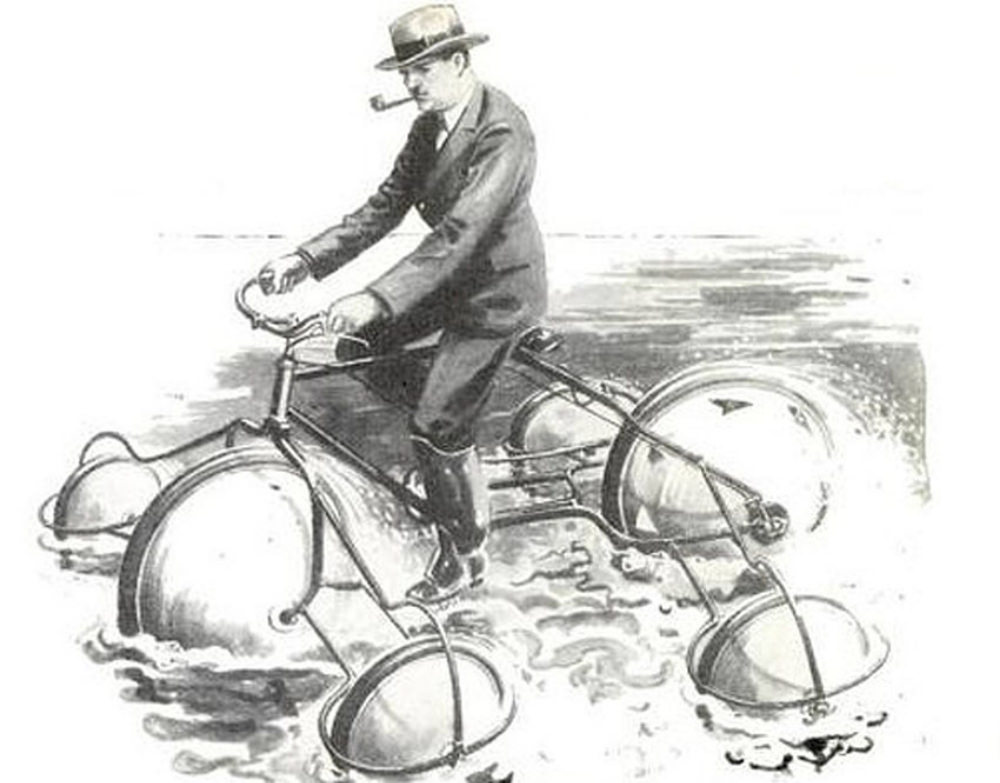In 1932, a remarkable invention captured the imagination of attendees at a Paris exposition—an amphibian bicycle that could effortlessly traverse both land and water. This unique vehicle emerged as a hybrid marvel during a time when innovation was pushing the boundaries of transportation. The French inventor behind this amphibian bicycle remains an enigmatic figure. His inspiration for creating such a unique vehicle likely stemmed from the pursuit of practicality and novelty.

Design and Features
The design of the amphibian bicycle was indeed a sight to behold. Its wheels were hollow and shaped into bulbous floats, aiding in its buoyancy on water. The four smaller globes on outriggers, which revolved freely like wheels, minimized drag and ensured stability.
The rear wheel was equipped with fins that served as paddles, driving the machine forward when the rider pedaled across the water. On dry land, the rider could simply fold the outriggers supporting the outer floats clear of the ground, allowing for conventional bicycle riding.
Functionality
Functioning both on land and water, the amphibian bicycle offered an entirely new experience to the rider. On water, the hollow wheels and revolving globes ensured a smooth ride, and the rear wheel’s fins efficiently propelled the bicycle forward.

On land, the transition was just as seamless. The outriggers could be folded up, transforming the machine into a standard bicycle. The inventor himself demonstrated the ease of navigation by riding the device across a large swimming pool and then onto dry land.
Demonstration and Reception
The demonstration at the Paris exposition in 1932 was met with wonder and curiosity. The amphibian bicycle, with its odd yet fascinating appearance, drew crowds eager to witness its performance.
The public reception was mixed with admiration for the innovation and skepticism about its practicality. Despite the media coverage, it remained a novelty rather than a revolution in transportation.
Challenges and Limitations
The amphibian bicycle, while a creative concept, faced numerous challenges and limitations. The complex design made it expensive and difficult to manufacture on a large scale. The vehicle’s buoyancy, though proven, might have faced issues with different water conditions or with the addition of a heavier rider.
Its practicality on regular streets or in various weather conditions also remained questionable. Safety concerns, particularly when transitioning from water to land, may have further hindered its commercial success.
Though unique in its time, the amphibian bicycle was part of a broader trend of creating vehicles that could navigate multiple terrains. Other amphibian vehicles, like cars and boats with similar dual functionalities, also emerged around the same time. What set this amphibian bicycle apart was its simplicity and the poetic elegance of combining the humble bicycle with the grand ambition of aquatic travel.


